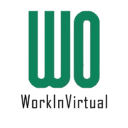Understanding the Importance of a Portfolio
In today’s competitive job market, the significance of a well-crafted career portfolio cannot be overstated. A portfolio serves as a curated showcase of a candidate’s skills, creativity, and accomplishments, transcending the limitations of a traditional resume. While resumes provide a snapshot of experiences and qualifications, portfolios offer tangible evidence of an individual’s capabilities through a collection of work samples and projects.
The increasing preference among employers for portfolios, particularly in creative and technical fields, reflects a shift in hiring practices. Organizations are seeking candidates who can demonstrate their expertise and potential through real-world applications of knowledge and skills. This trend underscores the necessity of having a portfolio that highlights not only completed projects but also ongoing work that illustrates a commitment to continuous learning and improvement.
Furthermore, a career portfolio allows candidates to articulate their unique brand and narrative. It provides an opportunity to present not just what they have accomplished, but how they think and problem-solve. This aspect can have a profound psychological impact on potential employers, as they can visualize a candidate’s thought process and the outcomes of their work. In effect, a portfolio serves as a conversation starter, enabling applicants to discuss their side projects and relevant experiences in a compelling manner.
Ultimately, the importance of a portfolio extends beyond merely having documents that affirm qualifications; it becomes a powerful tool that enhances employability. With the growing emphasis on creativity and technical prowess in various industries, crafting an impressive career portfolio has never been more crucial for job seekers aiming to distinguish themselves in their respective fields.
Creating an Effective Portfolio
Creating an effective career portfolio is essential for anyone looking to showcase their skills and accomplishments in a compelling manner. A well-constructed portfolio should include selected works that exemplify your best abilities, projects, and undertakings. When curating content for your portfolio, prioritize quality over quantity by choosing pieces that best represent your competencies and attract potential employers’ attention. This approach enables you to highlight work that aligns with your targeted career goals.
Organization plays a pivotal role in the effectiveness of your portfolio. Consider categorizing your work to provide a clear narrative of your career journey. For instance, segregating designs, articles, or technical projects can make it easier for reviewers to navigate through your work. Each piece should be presented with context, including a brief description of the project and your specific contributions. This will help potential employers understand your role and expertise.
The presentation of your career portfolio is equally important. Whether you choose to create a digital portfolio or a print version, ensure that it maintains a professional appearance. For online formats, consider utilizing various websites and platforms that can host your work effectively. Websites like Behance or GitHub are excellent options for creative professionals and those in tech, allowing you to showcase your work to a broader audience. Furthermore, tailor your portfolio to meet the expectations and preferences of specific industries. For example, a graphic designer might focus on visual aesthetics, while a researcher may prioritize detailed project analyses.
In conclusion, an effective portfolio is a reflection of your skills and potential. It should be well-organized, thoughtfully presented, and adaptable to various formats and audiences.
Showcasing Your Work: Best Practices
Creating an impactful career portfolio is essential in today’s competitive job market. To effectively present your work, it is crucial to incorporate storytelling techniques that engage the viewer. A narrative that illustrates the journey behind each project can draw the audience in, allowing them to connect with your work on a personal level. Begin by outlining the problem each project aimed to solve, the process you undertook, and the ultimate impact of your solutions. This structure not only makes your projects relatable but also reinforces your capability and creativity.
Providing context is another critical element when showcasing tasks in your portfolio. When presenting websites or side projects, it’s vital to explain the background of each initiative. Including details, such as the target audience, tools used, and challenges faced, gives viewers a comprehensive understanding of your work. Context is essential as it showcases your problem-solving skills and adaptability in diverse scenarios, enhancing the perceived value of your contributions.
When it comes to collaborative projects, it is important to highlight your individual contributions clearly. Specify your roles and responsibilities while also acknowledging the team’s collective efforts. This will not only showcase your ability to work within a team but will also clarify which aspects of the project reflect your skills and expertise. Furthermore, actively seeking feedback from peers or mentors can provide valuable insights into how your portfolio is perceived. Use this feedback to iterate on your work, refining your narrative and presentation to resonate better with your intended audience. By continuously improving your career portfolio based on constructive criticism, you can enhance its impact and effectiveness significantly.
Maintaining and Updating Your Portfolio
Maintaining and updating your career portfolio is an essential aspect of ensuring that it accurately reflects your professional journey and showcases your latest achievements. Over time, the skills and experiences you acquire will evolve, making it crucial to regularly assess and refresh your portfolio. This ongoing process involves not only adding new work but also removing outdated projects that no longer align with your current expertise or career aspirations.
To effectively schedule portfolio reviews, consider setting a recurring timetable, such as monthly or quarterly. During these sessions, evaluate which aspects of your portfolio remain relevant and which elements could benefit from refinement or removal. For instance, if you have undertaken new side projects or developed additional skills since your last update, ensure that these are prominently featured. This practice not only keeps your portfolio dynamic but also reinforces your commitment to continuous learning and professional growth.
If your portfolio is hosted on a website, leveraging analytics tools can provide valuable insights into viewer engagement. Analyzing metrics such as visitor numbers, time spent on your site, and the most viewed projects can help you understand which pieces resonate with your audience. This feedback is instrumental in identifying areas where you may want to focus future updates, be it by enhancing popular projects or developing new content that aligns with viewer interests.
Finally, remember that your career portfolio is a reflection of your professional identity. Regularly maintaining and updating it not only ensures accuracy but also demonstrates your proactive approach to career development. By establishing a routine for portfolio management, you empower yourself to effectively showcase both your current capabilities and future potential.



